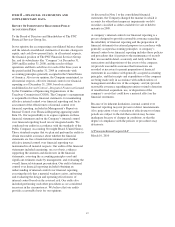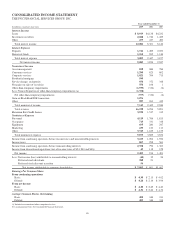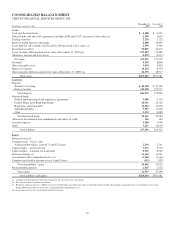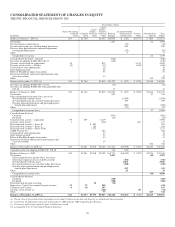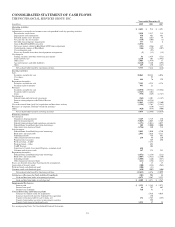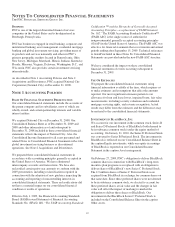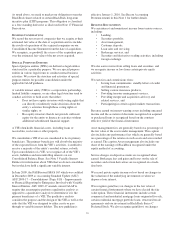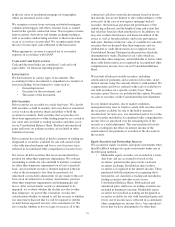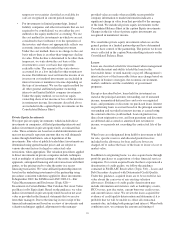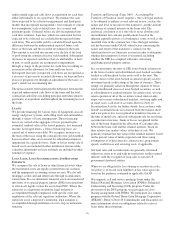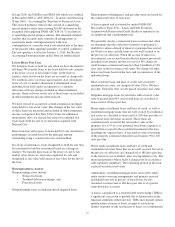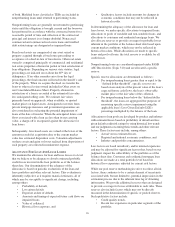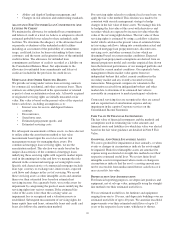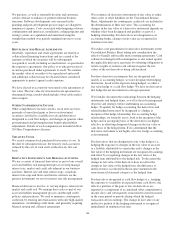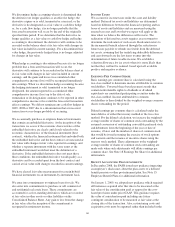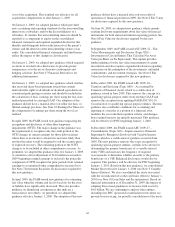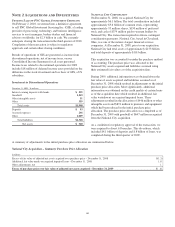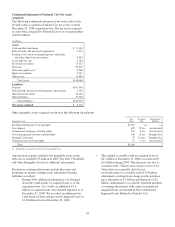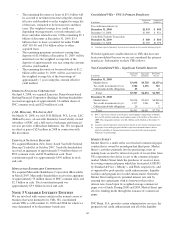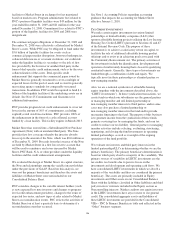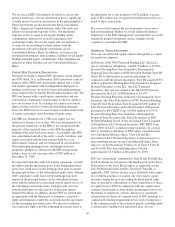PNC Bank 2009 Annual Report Download - page 101
Download and view the complete annual report
Please find page 101 of the 2009 PNC Bank annual report below. You can navigate through the pages in the report by either clicking on the pages listed below, or by using the keyword search tool below to find specific information within the annual report.In June 2009, the FASB issued SFAS 166 which was codified
in December 2009 as ASU 2009-16 – Transfers and Servicing
(Topic 860) – Accounting For Transfers of Financial Assets.
This revised guidance removes the concept of a qualifying
special-purpose entity from existing GAAP and removes the
exception from applying FASB ASC 810-10, Consolidation,
to qualifying special purpose entities. The amended standard
clarifies that an entity must consider all arrangements or
agreements made contemporaneously with or in
contemplation of a transfer even if not entered into at the time
of the transfer when applying surrender of control conditions.
The new guidance is effective January 1, 2010. See Recent
Accounting Pronouncements in this Note for further details.
L
OANS
H
ELD
F
OR
S
ALE
We designate loans as held for sale when we have the intent to
sell them. We transfer loans to the loans held for sale category
at the lower of cost or fair market value. At the time of
transfer, write-downs on the loans are recorded as charge-offs.
We establish a new cost basis upon transfer. Any subsequent
lower-of-cost-or-market adjustment is determined on an
individual loan basis and is recognized as a valuation
allowance with any charges included in other noninterest
income. Gains or losses on the sale of these loans are included
in other noninterest income when realized.
We have elected to account for certain commercial mortgage
loans held for sale at fair value. The changes in the fair value
of these loans are measured and recorded in other noninterest
income each period. See Note 8 Fair Value for additional
information. Also, we elected fair value for residential real
estate loans held for sale or securitization acquired from
National City.
Interest income with respect to loans held for sale classified as
performing is accrued based on the principal amount
outstanding using a constant effective yield method.
In certain circumstances, loans designated as held for sale may
be transferred to held for investment based on a change in
strategy. We transfer these loans at the lower of cost or fair
market value; however, any loans originated for sale and
designated at fair value will remain at fair value for the life of
the loan.
N
ONPERFORMING
A
SSETS
Nonperforming assets include:
• Nonaccrual loans,
• Troubled debt restructurings, and
• Foreclosed assets.
Nonperforming assets exclude purchased impaired loans.
Measurement of delinquency and past due status are based on
the contractual terms of each loan.
A loan acquired and accounted for under FASB ASC
Receivables (Topic 310) – Loans and Debt Securities
Acquired with Deteriorated Credit Quality is reported as an
accruing loan and a performing asset.
We generally classify commercial loans as nonaccrual when
we determine that the collection of interest or principal is
doubtful or when a default of interest or principal has existed
for 90 days or more and the loans are not well-secured or in
the process of collection. When the accrual of interest is
discontinued, any accrued but uncollected interest previously
included in net interest income is reversed. We charge off
small business commercial loans less than $1 million at 120
days after transfer to nonaccrual status. We charge off other
nonaccrual loans based on the facts and circumstances of the
individual loans.
Most consumer loans and lines of credit, not secured by
residential real estate, are charged off after 120 to 180 days
past due. Generally, they are not placed on nonaccrual status.
Subprime mortgage loans for first liens with a loan to value
ratio of greater than 90% and second liens are classified as
nonaccrual at 90 days past due.
Home equity installment loans and lines of credit, as well as
residential mortgage loans, that are well secured by residential
real estate are classified as nonaccrual at 180 days past due or
if a partial write-down has occurred. These loans are
considered well secured if the fair market value of the
property, less 15% to cover potential foreclosure expenses, is
greater than or equal to the recorded investment in the loan
including any superior liens. A fair market value assessment
of the property is initiated when the loan becomes 90 to 120
days past due.
Home equity installment loans and lines of credit and
residential real estate loans that are not well secured, but are in
the process of collection, are charged-off at 180 days past due
to the lower of cost or market value, less liquidation costs. The
unsecured portion of these loans is charged off in accordance
with regulatory guidelines. The remaining portion of the loan
is placed on nonaccrual status.
Additionally, residential mortgage loans serviced by others
under master servicing arrangements and primary-serviced
residential loans not in process of foreclosure are also
classified as nonaccrual at 180 days past due or if a partial
write-down has occurred.
A loan is categorized as a troubled debt restructuring (TDR) if
a significant concession is granted due to deterioration in the
financial condition of the borrower. TDRs may include certain
modifications of terms of loans, receipts of assets from
debtors in partial or full satisfaction of loans, or a combination
97


